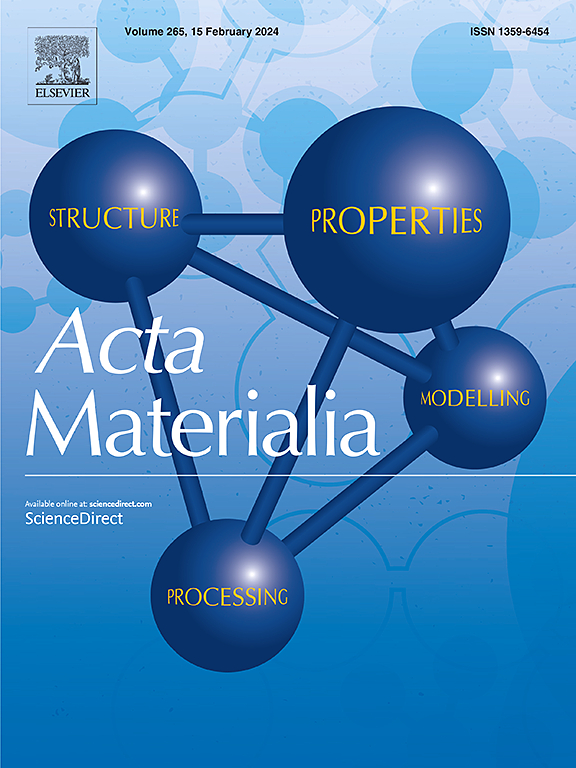多功能Mo-Ion夹层工程促进高性能水性锌离子电池
IF 8.3
1区 材料科学
Q1 MATERIALS SCIENCE, MULTIDISCIPLINARY
引用次数: 0
摘要
钒氧化物阴极在水性锌离子电池(AZIBs)中的广泛应用仍然受到三个基本限制:电解质介质中的结构性溶解、不充分的电子导电性和缓慢的Zn 2 +扩散动力学的限制。为了同时克服这些挑战,我们通过层间修饰设计了mo插层V3O7阴极(标记为Mo0.06V3O7)。这种多功能设计通过层间稳定实现了增强的结构完整性,提高了电荷转移能力,优化了Zn 2 +的传输途径,降低了扩散能垒。优化后的阴极在0.2 a g−¹下的比容量为460 mAh g−¹,在10 a g−¹下循环20000次后,其容量保持率为91.8%。值得注意的是,与温度相关的测试证实了在-20至40°C范围内的稳定运行,解决了实际部署场景中的一个关键限制。密度泛函数理论(DFT)计算揭示了三种协同机制:Mo插入加强V-O键(3.1双键能增加),同时调节Zn 2 +插入过程中的电荷再分布,有效降低锌离子与宿主骨架之间的静电相互作用(2.5双扩散势垒降低)。这种层间工程策略建立了一种适用于各种氧化钒系统的材料设计范例,有可能加速用于电网规模储能应用的高性能azib的开发。本文章由计算机程序翻译,如有差异,请以英文原文为准。


Multi-Functional Mo-Ion interlayer engineering facilitates high performance aqueous zinc-ion batteries
The widespread application of vanadium oxide cathodes in aqueous zinc-ion batteries (AZIBs) remains constrained by three fundamental limitations: structural dissolution in electrolyte media, inadequate electronic conductivity, and sluggish Zn²⁺ diffusion kinetics. To concurrently overcome these challenges, we engineered Mo-intercalated V3O7 cathodes (denoted as Mo0.06V3O7) through strategic interlayer modification. This multifunctional design achieves: enhanced structural integrity through interlayer stabilization, improved charge transfer capability, and optimized Zn²⁺ transport pathways with reduced diffusion energy barriers. The optimized cathode delivers a specific capacity of 460 mAh g−¹ at 0.2 A g−¹ and demonstrates exceptional cyclability with 91.8 % capacity retention after 20,000 cycles at 10 A g−¹. Notably, temperature-dependent testing confirms stable operation across -20 to 40 °C, addressing a critical limitation in practical deployment scenarios. Density functional theory (DFT) calculations reveal three synergistic mechanisms: Mo intercalation strengthens V-O bonding (3.1 double bond energy increase), simultaneously modulating charge redistribution during Zn²⁺ insertion and effectively reducing electrostatic interactions between zinc ions and host framework (2.5 double diffusion barrier decrease). This interlayer engineering strategy establishes a materials design paradigm applicable to diverse vanadium oxide systems, potentially accelerating the development of high-performance AZIB for grid-scale energy storage applications.
求助全文
通过发布文献求助,成功后即可免费获取论文全文。
去求助
来源期刊

Acta Materialia
工程技术-材料科学:综合
CiteScore
16.10
自引率
8.50%
发文量
801
审稿时长
53 days
期刊介绍:
Acta Materialia serves as a platform for publishing full-length, original papers and commissioned overviews that contribute to a profound understanding of the correlation between the processing, structure, and properties of inorganic materials. The journal seeks papers with high impact potential or those that significantly propel the field forward. The scope includes the atomic and molecular arrangements, chemical and electronic structures, and microstructure of materials, focusing on their mechanical or functional behavior across all length scales, including nanostructures.
 求助内容:
求助内容: 应助结果提醒方式:
应助结果提醒方式:


